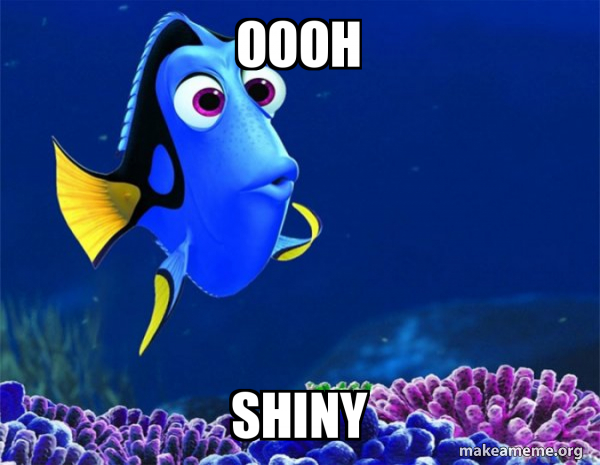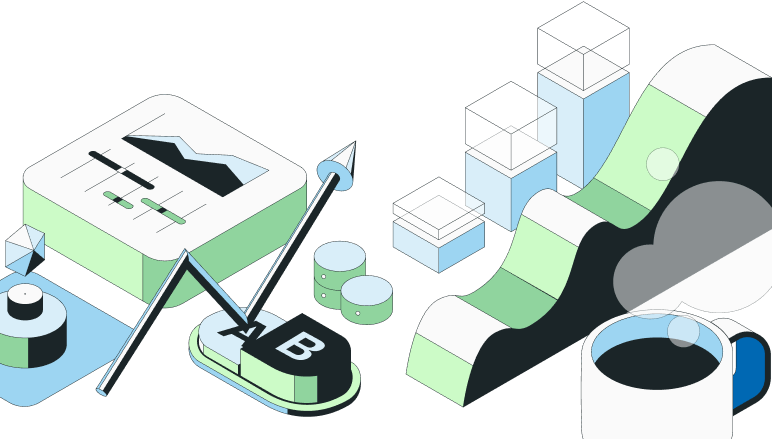From stranger to employee in 3 months
My name is Alison, and I’m very excited to have joined Statsig just this week as a product manager.
My path to product management was a bit long-winded; my background is in mechanical engineering, and while I loved thinking through all the intricate mechanical design options to delight users, my true passion was always collaborating with experts from various aspects of the business, like sales, marketing, program management, etc.
I spent the first half of my career trying out different hats to see what fits me the best: mechanical design, manufacturing, project management, and finance. But I ultimately wanted a way to combine all these experiences together, and I also became curious about leadership, so I decided to go back to school to get my MBA, and that’s where I fully transitioned into product management.
My last gig before Statsig was at Wayfair, where I managed teams across warehouse order/inventory systems and reverse logistics systems. After 4 wonderful years there, I was ready for a change.
What I was looking for
After Wayfair, I was fortunate enough to be able to take a break and start searching for my next step. I didn’t want to rush, and was determined to take as long as needed in order to find the perfect career opportunity for me (props to my partner for his support!). I spent the first 1-2 months reflecting on my past experiences and having lots of coffee chats to come up with my criteria, which I broke down into ‘basic’ v. ‘shiny’:

‘Basic’ Criteria: Bare minimum that I need to survive 9-5 at work.
Psychologically safe environment
Smart people I can learn from and enjoy working with
Enough pay for me to maintain my lifestyle
‘Shiny’ Criteria: Things that will make me feel truly fulfilled and excited to come to work
I feel proud of the work I do, and get to work with people who are excited to come to work every day
Work under leaders, not just managers (think influence and inspiration rather than power and control)
Focus on good execution over perfect planning: As a recovering perfectionist, this was a personal goal of mine to continue to improve on
The problems I get to solve are multi-faceted (e.g. human behaviors, technical challenges, cultural adoption/norms)
High growth potential, so I can continue to learn different skills
.. and lastly, but perhaps most importantly, following my gut.
Enter Statsig
Initial Chats
I first got connected to Statsig in July, when I got introduced to Anu (lead PM) through a friend who used to work for her. Managers have a huge impact on your day-to-day, and it was a great sign that my friend would recommend Anu as a manager.
We had a chat over zoom (I was still in Boston), and there were a few things that really stood out to me during this chat:
1) Anu’s own story of how she joined; she first interacted with the Statsig team as a VC, but the more she was in their office brainstorming, the more she started looking forward to the days she’d come in. So she decided to join Statsig full-time (after exposure to the company, which is a good sign).
2) The problem Statsig is solving; as a former PM manager who was constantly thinking about how our teams can go faster and have greater impact, I immediately understood the value Statsig was providing for teams.
3) Statsig’s ambition was beyond just giving their customers a tool; they wanted to change their customers’ product culture through these tools. I’m a huge believer in culture being the driver of changes and adoption, and this is what really sparked my curiosity.
But at this point, the timing wasn’t right—I wasn’t ready to get a new job yet, and Statsig was also trying to grow its engineering team first. So we decided to check back once I moved to Seattle.
Interviews
Early September, Anu asked me if I was ready to come into the office for an interview (she first called it a ‘lunch’, and thank goodness she clarified it before the actual day).
I’m the type of person who likes to be prepared, and I wasn’t sure if I felt ready to be interviewed, given I had just moved to Seattle and was busy settling in. But I was told to “just be myself”—which I honestly thought was just fluff advice at first, but I followed my gut and went with it.
I was also lucky that I had a college friend who was at Statsig, so I connected with her to learn more about the company, which helped me come up with questions I wanted to dig deeper into to make sure I could evaluate Statsig’s fit for me as well.
I had interviews with the heads of Engineering, Design, Data, and the founder. There was a part of me that was intimidated at first, given that most of the company shared this ex-Facebook culture that I didn’t. But I decided to be fully transparent, recognizing how my experience was different from others’, and what that meant for the perspectives and values that I bring to the table. I think what worked well here was that I was curious and had my own hypotheses and perspectives on the company/ product (e.g. how my experience as a manager gives me perspectives on team velocity).
There were a few things that really jumped out at me throughout all my conversations. For one, everyone was just beaming with pride when it came to the product and company they have helped to build. They had such an exciting and strong vision for the product regardless of their role, and it was clear this was a place that just attracted amazing talent: Many people had left their previous jobs to follow the leadership team. As someone who really values culture and leadership, that last point made a strong impression on me.
While I enjoyed all my conversations, the moment I could really see myself being part of this company was during my chat with the founder Vijaye.
My first job out of college was at a startup, and while the startup was making a huge pivot, a lot of my colleagues were laid off because their skills were no longer relevant. I didn’t think that the situation was particularly handled with enough empathy, and that had been a really important learning moment for me as I started formulating my own opinions on what makes someone a great leader.
I asked Vijaye during the interview, “what does this company mean to you?”. Perhaps a bit bold, but it was an important question for me due to my previous experience at a startup that failed. He replied by sharing how many employees are people he’s worked with for years and seen their families grow up, or people who have put enough faith in his leadership to quit their comfortable jobs and follow him to the company. This is something he thinks about every day, and doesn’t take for granted.
And this is where your gut comes into play: Do you trust this leadership team and founder to successfully navigate market uncertainties during this difficult time? Do you trust them to be transparent with you when things are not going well? Do you trust them to see you as a valued partner through all the ups and downs? My gut was telling me a resounding yes.
Now I’m here!
The best advice I was given while I was job searching was that the more genuine I can be during the recruitment process, the more comfortable I’ll feel and the better I’ll do—and also be able to evaluate the right fit more accurately. This philosophy was definitely true for me during the recruiting process, and has even made it easier for me to ask so many darn questions as I onboard (which is exactly what you should do, btw!).
It’s only my first week yet, but each day I am more and more impressed by the team’s velocity, excitement, and transparency, and feeling more sure that I’ve made the right decision for me.
Get a free account

Build fast?
Recent Posts
Building an experimentation platform: Assignment
Take an inside look at how we built Statsig, and why we handle assignment the way we do. Read More ⇾
Decoding metrics and experimentation with Ron Kohavi
Learn the takeaways from Ron Kohavi's presentation at Significance Summit wherein he discussed the challenges of experimentation and how to overcome them. Read More ⇾
It’s normal not to be normal(ly distributed): what to do when data is not normally distributed
Learn how the iconic t-test adapts to real-world A/B testing challenges and discover when alternatives might deliver better results for your experiments. Read More ⇾
How the engineers building Statsig solve hundreds of customer problems a week
See how we’re making support faster, smarter, and more personal for every user by automating what we can, and leveraging real, human help from our engineers. Read More ⇾
Enhanced marketing experiments with Statsig Warehouse Native
Marketing platforms offer basic A/B testing, but their analysis tools fall short. Here's how Statsig helps you bridge the gap and unlock deeper insights. Read More ⇾
Feature rollouts: How Instagram left me behind
When Instagram Stories rolled out, many of us were left behind, giving us a glimpse into the secrets behind Meta’s rollout strategy and tech’s feature experiments. Read More ⇾






